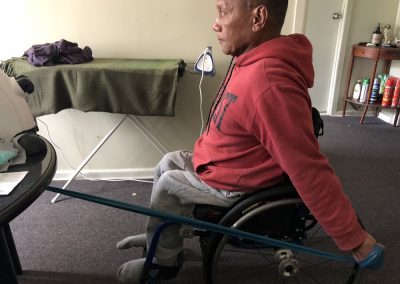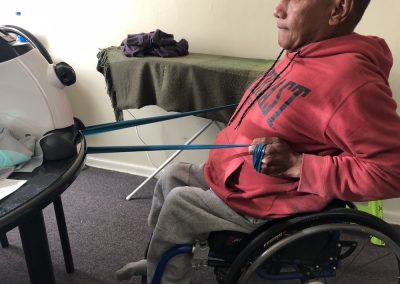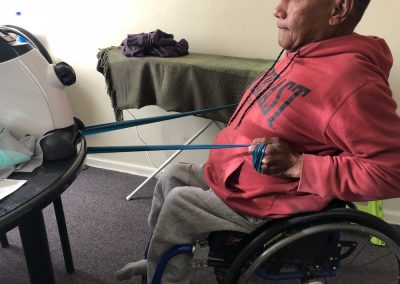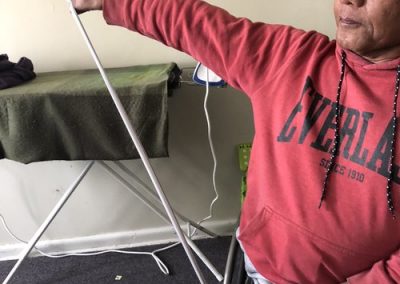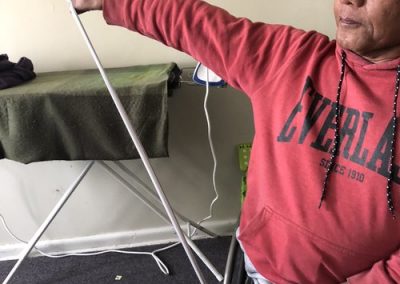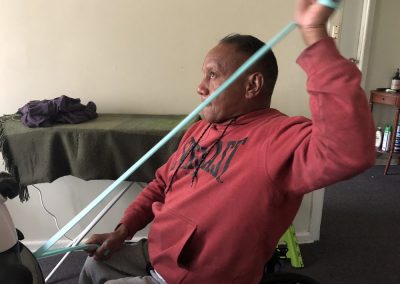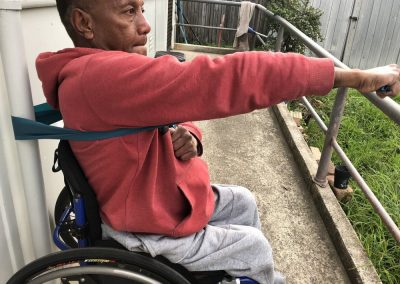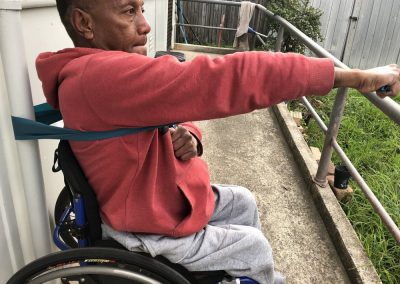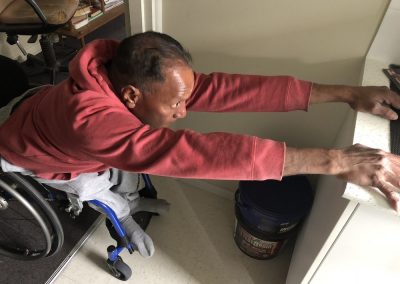Ever since I can remember, I have been in a wheelchair. As a young boy I was injured in a horse riding accident. Over time I had to learn how to only use my arms and upper body for all my tasks. At first this was difficult, but like with anything new, I got used to this way of living.
At the start of the year, I was beginning to feel shoulder and arm pain. It was great timing when my NDIS plan was approved and I found out that I had funding for exercise. I was told the person that does exercises with people like myself are Exercise Physiologists. I didn’t know what an Exercise Physiologist was nor heard of one before. The young lady from Active Ability who came to see me explained what Exercise Physiologists do, and immediately I thought ‘this is what I need.’
Initially I wasn’t sure how I could exercise, as I always imagined exercise is only done in a gym. With Nadia giving me a lot of education, she said exercise can be completed anywhere as long as you have the right equipment (sometimes you don’t even need equipment). I thought this was great, because it meant I could do this in my own home. I began to see the benefits really quickly, so I even went and purchased the equipment Nadia was using with me so I could try the exercises myself on some other days of the week.
Our client John, requires the support of an Exercise Physiologist due to the impact of his Spinal Cord Injury. John transfers up to 25 times a day, so without the ability to independently transfer, John not be able to transfer nor completes his daily activities (driving, self/care).
Why is exercise important for me?
I was already beginning to feel pain in my upper body, so I knew something wasn’t right but wasn’t sure what was going on. I was reassured and told that exercise can definitely help with my symptoms and allow me to feel stronger. Now, I can say that through completing the exercises I feel stronger and have less pain in my upper body. It is definitely important for me because I am preventing injuries. Also, by moving my arms and doing the arm cycling exercise, I am keeping fit and potentially reducing my risk of heart diseases, or diabetes later in life; something that runs in my family.
What does the research suggest?
Different forms of exercise:
- Aerobic exercise – should be completed daily for at least 30 minutes. Arm cycling and/or boxing are examples.
- Resistance exercise – should be completed at least 3 times a week, with a focus on shoulder stabilisation and strength.
- Flexibility exercise – should be completed daily in the form of stretches.
Tweedy et al., (2017).
My Exercise Program
These are some of the exercises I am completing
“Thank you to Nadia for helping me and getting my health back on track. I had never exercised before and wasn’t sure what I would be doing but I can say this is helping me remain fit by preventing disease later in my life and keeping my shoulders strong.”
References
Tweedy, S. M., Beckman, E. M., Geraghty, T. J., Theisen, D., Perret, C., Harvey, L. A., & Vanlandewijck, Y. C. (2017). Exercise and sports science Australia (ESSA) position statement on exercise and spinal cord injury. Journal of Science and Medicine in Sport, 20(2), 108-115.
